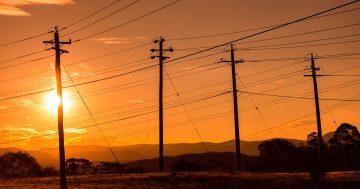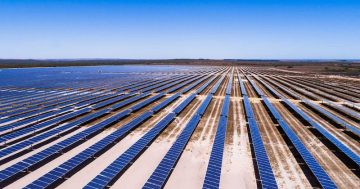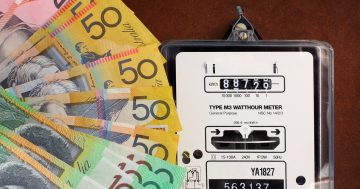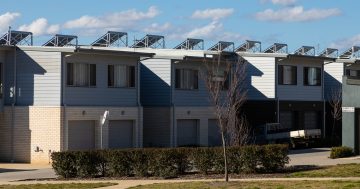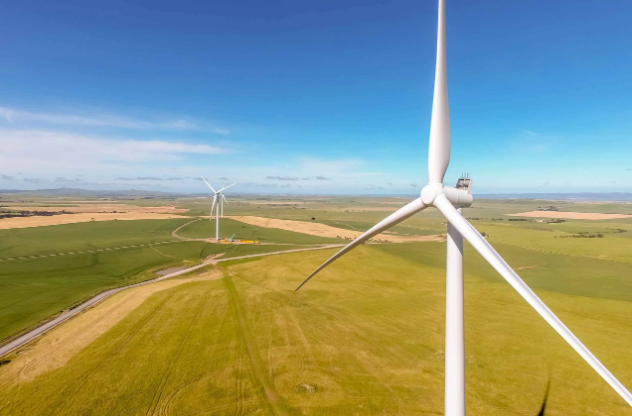
Hornsdale wind farm in South Australia supplies the ACT with green energy. Photo: File.
The ACT is the only jurisdiction in the country where electricity bills are expected to rise over the next three years, according to the latest modelling from the energy market regulator.
The Australian Energy Market Commission has predicted that ACT consumers will be hit with a four per cent rise (around $77 on average), mainly due to the ACT’s deals with renewable energy providers.
AEMC Chair Anna Collyer said new modelling showed ACT prices rising by $99 in financial year 2021-22 and $123 in 2022-23 before falling by $145 in 2023-24.
The largest contributor to the price increase will be environmental costs that are expected to rise by 44 per cent, or $138, due to increases in the costs of large scale Feed-in Tariff Schemes in the ACT, equating to an annual average rise of 12.89 per cent.
Network costs are the next biggest factor and are expected to increase by 19 per cent, or $112, over the reporting period or 5.9 per cent a year, driven by increases in transmission and distribution costs.
Wholesale costs are expected to rise by only 8 per cent, or $55, for an annual average rise of 2.6 per cent.
But Ms Collyer said a large number of ACT consumers (28.7%) were still on standing offers rather than cheaper market offers, so there were savings available to households if they shopped around for a better deal.
“In fact, they could save up to $284 a year on their energy bill,” Ms Collyer said.
Ironically, power bills elsewhere are trending down as cheaper renewable energy flows to consumers, lowering wholesale costs and reducing environmental costs in most regions.
Across the border in NSW, electricity prices are estimated to fall by 4 per cent or about $50, an annual average drop of 1.3 per cent.
Overall, households can expect to pay around $77 less (or 6%) for electricity in 2024 than they do today, as cheaper renewable energy flows to consumers, reducing prices to their lowest levels since 2017.
Ms Collyer said the report showed that, based on current trends, prices per kilowatt-hour were likely to be under 26c/kWh by June 2024 for the first time since 2016-17.
“This illustrates how integrating renewables in a smart way makes it possible to have both lower emissions and lower costs for consumers,” Ms Collyer said.
“We can now see far enough into the future to be confident that power prices paid by consumers will continue to trend downwards over the next three years, despite the staged exit of Liddell power station in 2022 and 2023, one of the biggest coal-fired generators in the national electricity market.”
But she warned that network costs were rising and will accelerate over the next decade as more investment was required to connect dispersed new generation to the grid.
“There are also regional differences across states and territories in the national electricity market that will affect price outcomes. And what energy offer you have, how much you use and whether you also have solar or gas will also affect your bill,” she said.
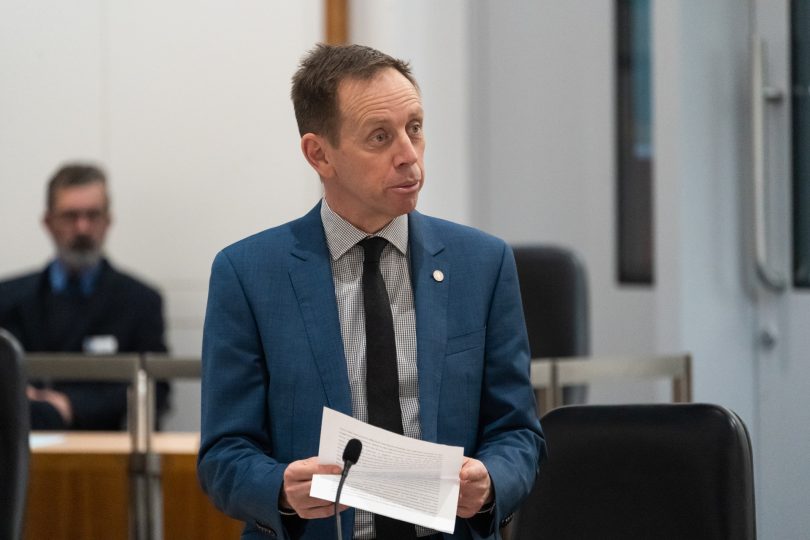
Minister for Energy and Emissions Reduction, Shane Rattenbury: make your home energy efficient and shop around. Photo: File.
Minister for Energy and Emissions Reduction Shane Rattenbury said even with the predicted increase, ACT electricity prices would remain comparable with other jurisdictions while delivering 100 per cent renewable electricity.
Mr Rattenbury said making homes more energy-efficient would help bring bills down.
“By installing insulation, draught-proofing doors and windows or replacing inefficient appliances, you may be able to save money and make your home more comfortable,” he said.
“The ACT Sustainable Home Advice Program offers free advice to households on how to save energy, including a tailored service for renters.”
Mr Rattenbury also urged consumers to shop around, saying switching to different pricing plans or changing energy retailers could save hundreds of dollars a year.
He said the new Better Bills Code required retailers to notify customers when a better tariff is available, and the government offered a range of support measures for households struggling with energy costs, such as the $750 a year Utilities Concession and Utilities Hardship vouchers of $100.
Nationally, Ms Collyer said the report showed prices were expected to fall slightly in 2021-22, increase by around $20 a year in FY22-23 as Liddell exits the system, and then fall again as lost capacity is replaced by a combination of solar, wind, gas and batteries.
“While we have just under 2500 MW of generation expected to exit the grid over the next three years, there is almost 5,500 MW of committed new large-scale generation and storage projects coming online over the same time period,” Ms Collyer said.
“This is in addition to 4130 MW of new rooftop solar PV capacity which will also influence prices by lowering demand and through exports.”
Ms Collyer said it was important to be smart in how resources were connected to the grid and ensure the backup needed for a secure supply so the benefits of low-cost and low-emission generation weren’t eroded.
“Everything we’re doing at the AEMC and Energy Security Board is about making the most of renewables,” she said.
“That means maximising the benefits through reforms to distributed energy resources such as solar, minimising the emerging costs of planned network investments to connect renewables to consumers while ensuring we have electricity when and where we need it to keep the lights on.”












